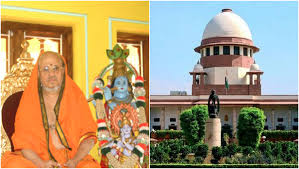Vishwanatha vs. State of Karnataka by the Secretary, Home Department [July 08, 2024]
Citation: 2024 INSC 482; Criminal Appeal No. 129 of 2012
Background and Facts
The case concerned the murder of Devaki, an 86-year-old woman, in Mangalore, Karnataka, in December 2000. The prosecution alleged that Vishwanatha (the appellant) and one Ravikumar entered Devaki’s house and strangled her to death. The trial court acquitted both accused, citing doubts regarding their identification and inconsistencies in witness testimony. The State appealed, and the Karnataka High Court reversed the acquittal, convicting both under Sections 302 and 450 read with Section 34 of the IPC and sentencing them to life imprisonment and five years’ rigorous imprisonment, respectively. Ravikumar died shortly after the High Court judgment, leaving Vishwanatha as the sole appellant before the Supreme Court.
Key Issues
Whether the prosecution had established the identity of the appellant beyond reasonable doubt.
Whether the absence of a Test Identification Parade (TIP) was fatal to the prosecution’s case.
Whether the evidence of the main eyewitnesses (PW-1 and PW-2) was reliable and sufficient for conviction.
Arguments
Appellant:
Contended that PW-1 and PW-2, the main eyewitnesses, were not credible due to inconsistencies in their testimonies and the autopsy report.
Argued that no TIP was conducted, even though the appellant was a stranger to the witnesses, making their in-court identification unreliable.
Pointed out that there were six persons named Vishwanatha in the village, and the prosecution failed to explain how the appellant was singled out and apprehended by the police.
State:
Asserted that the High Court correctly found the contradictions to be minor and not material.
Maintained that TIP is not substantive evidence and that identification in court by PW-1 and PW-2 was sufficient, especially since the time gap between the incident and evidence was only ten months.
Emphasized that the medical evidence corroborated the prosecution’s case of homicidal death.
Supreme Court’s Analysis and Findings
The Court noted concurrent findings of homicidal death, supported by the autopsy report and medical testimony.
However, the Court found serious deficiencies in the prosecution’s case regarding the identity of the appellant:
The arrest of the appellant was not supported by any independent witness or arrest memo.
The Sub-Inspector (PW-19) could not explain how the appellant was identified and apprehended, given that several people in the village shared the same name and no distinguishing description was provided.
The absence of a TIP, in a case where the accused was a stranger to the witnesses, was a significant omission. The Court held that in such circumstances, in-court identification alone was insufficient to establish guilt beyond reasonable doubt.
The prosecution’s case rested almost entirely on the testimony of PW-1 and PW-2, which, in the Court’s view, was not free from doubt given the lack of corroboration and the procedural lapses in identification.
Conclusion and Significance
The Supreme Court allowed the appeal, acquitted Vishwanatha by giving him the benefit of the doubt, and set aside the High Court’s conviction. The order of acquittal by the trial court was restored.
The judgment underscores the importance of proper identification procedures, especially when the accused is a stranger, and reaffirms that the absence of a TIP can be fatal to the prosecution’s case in such scenarios.
The Court reiterated that conviction must be based on evidence that proves guilt beyond reasonable doubt, and procedural lapses that cast doubt on identity cannot be ignored.
This decision is a significant reaffirmation of the principles of fair trial and the evidentiary standards required for conviction in criminal cases.






























0 comments